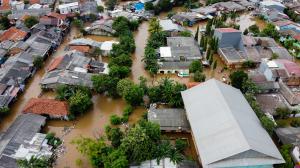National Flood Insurance Program Provides Essential Protection, But Supplemental Flood Insurance is Highly Recommended
NFIP coverage is not always sufficient on its own, and property owners should seriously consider purchasing supplemental flood insurance.
Flooding is the most common and costly natural disaster in the United States, affecting homes and businesses across the country. According to the National Oceanic and Atmospheric Administration (NOAA), annual flood-related losses have exceeded $17 billion in recent years. With climate change exacerbating extreme weather events, the need for adequate flood insurance has become increasingly vital.
NFIP was created in 1968 to help property owners secure affordable flood insurance and promote floodplain management to reduce the risk of flooding. However, the program has faced significant challenges in recent years, including mounting debt and outdated flood maps that do not accurately reflect the risk posed by changing weather patterns.
"While the NFIP provides essential protection for many homeowners and renters, it is important to understand that it may not be sufficient for every individual's needs," says Dan Burghardt, President of Dan Burghardt Insurance. "In many cases, additional flood insurance is necessary to fully protect your property and belongings from the potentially catastrophic effects of flooding."
One of the key limitations of the NFIP is its maximum coverage amounts. The program offers a maximum of $250,000 in coverage for residential buildings and $500,000 for commercial structures, with additional limits for personal property. While this may be adequate for some properties, others require more extensive coverage to protect their investments fully.
Furthermore, the NFIP's coverage does not extend to certain types of property, such as basements and exterior structures like patios and decks. Homeowners and renters should carefully review their policy to ensure they are fully protected.
Dan Burghardt, an expert in the insurance industry, emphasizes the importance of having flood insurance: "Even if you're not in a designated high-risk flood zone, the threat of flooding is real. It's crucial for property owners to have a clear understanding of their coverage and to consider additional flood insurance to ensure they are adequately protected in the event of a disaster."
In addition to the coverage limitations, the NFIP does not cover costs related to loss of use or temporary relocation, which can be an immense burden on families displaced due to flooding. Supplemental flood insurance can fill these gaps in coverage, providing the additional protection necessary to minimize financial losses and promote a faster recovery.
Many private insurers offer supplemental flood insurance that can be customized to meet individual needs. These policies can provide additional coverage for residential or commercial properties, as well as protection for personal property and living expenses. By working with an experienced insurance agent, property owners can tailor their coverage to their unique circumstances, ensuring they are fully protected in the event of a flood.
In conclusion, the National Flood Insurance Program plays a crucial role in helping millions of Americans protect their properties from the devastating effects of flooding. However, the limitations of the program mean that many property owners will require supplemental insurance to ensure they are fully covered. Experts like Dan Burghardt recommend that property owners take the time to review their coverage, understand their risks, and consider purchasing additional flood insurance to protect their investments and secure peace of mind in the face of an increasingly unpredictable climate.
For more information about flood insurance, contact Dan Burghardt Insurance Agency
Morgan Thomas
Rhino Digital LLC
+1 5048755036
email us here
Visit us on social media:
Facebook
Twitter
Instagram
Legal Disclaimer:
EIN Presswire provides this news content "as is" without warranty of any kind. We do not accept any responsibility or liability for the accuracy, content, images, videos, licenses, completeness, legality, or reliability of the information contained in this article. If you have any complaints or copyright issues related to this article, kindly contact the author above.


